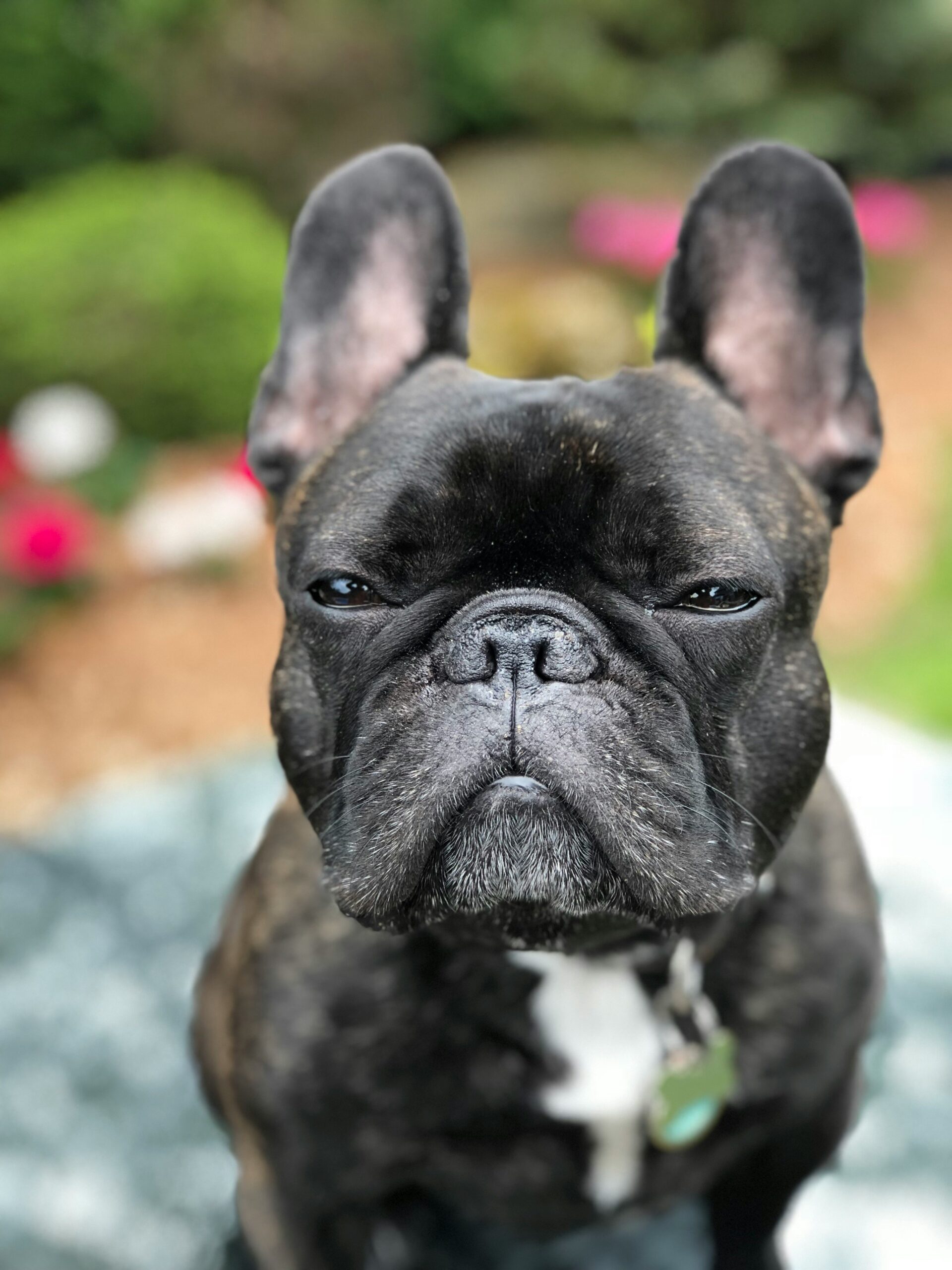French Bulldogs have captured hearts with their charming demeanor and endearing squished faces. As you dive into the whimsical world of these canine companions, you’ll discover why they reign supreme among dog lovers everywhere. From their quirky personality traits to their loyal nature, the french bulldog is more than just a pet; they are delightful little companions that make life infinitely more enjoyable. So, buckle up and get ready to explore the fascinating reasons behind their lasting appeal!
The History and Origin of the French Bulldog
Ah, the French Bulldog! This charming little companion has a history as colorful as its personality. Originally bred in England in the 1800s, the French Bulldog was meant to be a miniaturized version of the English Bulldog, creating a lovable lapdog for lace workers.
Here’s a quick timeline of their evolution:
- 19th Century: Lace workers in Nottingham sought smaller bulldog-type dogs.
- Late 1800s: The breed crossed the English Channel, making its debut in France.
- 1900: The French Bulldog quickly gained popularity among Parisian society, winning hearts with its bat-like ears and adorable smushed face.
What makes the French Bulldog even more appealing is its ability to adapt. These pooches became symbols of chic Parisian living, found lounging in cafes and strolling down boulevards.
So, the next time you spot a French Bulldog, remember: this delightful breed has a robust history, blending hard work and elegance. It’s no wonder dog lovers continue to be enchanted by their unique charm!
Unique Physical Characteristics
When you think of a French Bulldog, you probably envision a charming little bundle of joy with a rather distinctive look. This adorable breed stands out for several unique physical traits, making them a favorite among dog enthusiasts:
- Compact Size: Weighing in at just 16 to 28 pounds, the French Bulldog is perfect for apartment living or cuddling on the couch.
- Bat-Like Ears: Those striking, upright “bat ears” are not only adorable but help give the French Bulldog its signature expression.
- Wrinkled Face: Their trademark wrinkles add a certain charm, although it’s essential to keep them clean to prevent any skin issues.
- Short Snout: The French Bulldog boasts a flat face (brachycephalic), which contributes to their unique charm. However, it also calls for some attention regarding respiratory health.
| Feature | French Bulldog | Other Breeds |
|---|---|---|
| Size | Small | Varies (often larger) |
| Ears | Bat-like | Drop or Semi-erect |
| Facial Structure | Wrinkled, Brachycephalic | Varied Structures |
With their quirky appearance and irresistible personalities, French Bulldogs have carved out a niche in the hearts of dog lovers everywhere! 🐶💖
Temperament and Personality Traits
When it comes to the French Bulldog, their temperament is as delightful as a sunny afternoon in Paris. These pooches pack a playful spirit, serving up just the right blend of affection and cheekiness. Here’s what makes them a canine companion above the rest:
- Affectionate: French Bulldogs adore their humans. Expect them to follow you around like a tiny shadow, eager for cuddles.
- Playful: Their goofy antics can turn any mundane moment into a laugh fest. Who can resist a Frenchie trying to chase its own tail?
- Adaptable: Whether you’re in a cozy apartment or a sprawling house, a French Bulldog is quite happy as long as you’re nearby.
- Social Butterflies: These charming dogs get along with everyone—people, pets, you name it.
Fun Fact:
Did you know that French Bulldogs can be quite the talkers? Their unique “talking” sounds often get confused with snorts, but it’s just their way of expressing happiness!
In sum, French Bulldogs aren’t just pets; they’re your small yet mighty companions ready to fill your life with love and laughter.
Intelligence and Trainability
When it comes to brains and brawn, the French Bulldog struts confidently down the canine runway! Known for their sharp minds wrapped in adorable, compact bodies, French Bulldogs are surprisingly intelligent. But let’s dive deeper into the realm of training.
Why Training Your French Bulldog is Key:
- Quick Learners: These furry friends absorb tricks faster than you can say “bark-ology.” They thrive on mental stimulation and enjoy the challenge of learning.
- Playful Attitude: Incorporating play during training sessions keeps their spirits high. Who can resist a game of tug-of-war while learning sit or stay?
- Social Butterflies: French Bulldogs adore human interaction. Positive reinforcement works wonders. Treats, praise, and belly rubs will make your training sessions a delightful experience.
Training Tips:
- Short Sessions: Keep training fun and engaging with brief, focused sessions.
- Consistency is Key: Use the same commands to avoid confusion.
- Start Early: Begin training when they’re puppies to establish good habits early.
In short, with a little patience and creativity, your French Bulldog will not only learn commands but also steal your heart every step of the way!
Health Considerations for French Bulldogs
When it comes to the charming French Bulldog, health considerations are just as important as their adorable looks. These little companions can be prone to specific health issues, so let’s break it down:
Common Health Concerns:
- Brachycephalic Airway Syndrome: Thanks to their short snouts, these pups may struggle with breathing. Keep an eye on your Frenchie’s wheezing after playtime!
- Hip Dysplasia: Not just a fancy term! It refers to a malformation of the hip joint, which could lead to arthritis down the line. Regular vet check-ups are a must!
- Skin Issues: Their adorable wrinkles can trap moisture and dirt, making them prone to infections. Regular cleaning and care can save you some vet bills!
- Ear Infections: Floppy ears call for regular cleaning to prevent pesky infections.
Tips for Keeping Your French Bulldog Healthy:
- Regular Vet Visits: Routine check-ups can catch issues early.
- Healthy Diet: Don’t overindulge! Watch their weight, as it can exacerbate health problems.
- Moderate Exercise: A daily stroll is great, but avoid overheating during hot weather.
By being proactive, you can keep your French Bulldog healthy and thriving for years, ensuring they remain a forever favorite!
The French Bulldog in Popular Culture
Ah, the French Bulldog! This adorable pooch has strutted its stuff through the halls of popular culture, stealing hearts one meme at a time. With its charming squished face and perky ears, the French bulldog has become an undeniable icon. Let’s take a closer look at why this breed is a fan favorite!
- Celebrity Companion: Numerous A-list stars, like Lady Gaga and Dwayne “The Rock” Johnson, have flaunted their love for French bulldogs, turning them into the ultimate status symbol.
- Social Media Sensation: Instagram is awash with French bulldog influencers, showing off their antics and making us chuckle daily. Their playful antics guarantee a burst of joy – who doesn’t love a Frenchie in a funny costume?
- Fashion Forward: The French bulldog has emerged as a favorite in the fashion industry, often seen strutting down runways and in trendy photo shoots. Their knack for making anything look chic is simply unparalleled!
In short, the French bulldog isn’t just a pet – it’s a lifestyle. From red carpets to your Instagram feed, these pups continue to bring joy, style, and a dash of madcap charm to all corners of pop culture!
Living Situations: Are They Right for You?
So, you’re considering adding a French Bulldog to your life? Great choice! But before you rush to adopt one, let’s delve into whether these adorable companions fit snugly into your living situation.
Ideal Living Conditions for French Bulldogs:
- Apartment Living: Perfect! French Bulldogs thrive in smaller spaces. They don’t require vast backyards for frolicking and are quite content lounging on your lap.
- Activity Level: While they enjoy playtime, short walks suffice. No need for marathon runs!
- Climate Sensitivity: French Bulldogs don’t fare well in extreme temperatures due to their brachycephalic (short snouted) build. Keep them cool in summer and warm in winter!
- Family Dynamics: They adore families, singles, and seniors alike. However, if you have rambunctious kids or other pets, ensure everyone gets along!
Pros & Cons of Welcoming a French Bulldog:
| Pros | Cons |
|---|---|
| Adorable & Affectionate | Prone to Health Issues |
| Great with Kids | Can Be Stubborn |
| Low Exercise Needs | Snoring & Snorting |
In short, a French Bulldog might just be your ideal furry roommate, provided you accommodate their unique needs and quirks!
Living Situations: Are They Right for You?
When contemplating a French Bulldog as your next furry companion, consider your living situation. These adorable little gremlins pack a lot of personality into their compact frames and do best in certain environments. So, are they right for you? Let’s break it down:
- Apartment Living: Perfect for city slickers! French Bulldogs thrive in smaller spaces, making them ideal apartment dwellers. Their low exercise needs mean a cozy couch and quick potty breaks are all you need.
- House with a Yard: An absolute bonus! If you’ve got a yard, your pooch will enjoy soaking up the sun. Just ensure the fence is sturdy—French Bulldogs are not known for their jumping abilities, but they’re clever enough to find a way out.
- Family-Friendly: French Bulldogs adore social interaction and love kids, making them perfect for families. They might even become your child’s best study buddy.
On the flip side, they struggle in extreme temperatures. Whether it’s a scorching summer or a chilly winter, be prepared to keep your French Bulldog comfortable. Overall, if you want a charming companion who adapts well to your lifestyle, the French Bulldog just might be your match!
The Bond Between French Bulldogs and Their Owners
The connection between a French Bulldog and its owner is nothing short of magical. Picture this: a cuddly, snorting ball of love curling up next to you after a long day. Here’s what makes that bond so special:
- Companionship: French Bulldogs thrive on human interaction. Their loyal nature means they’ll follow you around like a shadow, always ready to provide comfort.
- Playful Personalities: Their quirky antics and playful behavior can lighten any mood. Whether it’s chasing after their favorite toy or performing silly tricks, they keep you entertained!
- Empathy Experts: French Bulldogs have an uncanny ability to sense emotions. When you’re feeling down, they seem to know just how to lift your spirits—perhaps with a wet-nosed cuddle or cheeky smile.
- Loyal Protectors: Despite their small size, French Bulldogs have big hearts. They often form a protective bond with their owners, making them feel cherished and secure.
In short, owning a French Bulldog means having a devoted friend who adds joy and laughter to your life—forever!
The Bond Between French Bulldogs and Their Owners
Ah, the French Bulldog, that adorable bundle of joy that seems to wrap its paws around your heart! The bond between a French Bulldog and its owner is nothing short of magical. Here’s why those charming little faces have such a knack for forming deep connections:
- Affectionate Nature: French Bulldogs are natural cuddlers. They thrive on snuggles and close companionship. You’ll find them right beside you, just soaking up the love.
- Loyal Companionship: These pups are fiercely loyal. They have an uncanny ability to sense your emotions, always knowing when you need a comforting nuzzle or a playful distraction.
- Playful Spirits: With their playful antics, French Bulldogs keep the mood light. Their comical personalities bring joy, making it hard not to smile!
- Training to Bond: Because they are intelligent and eager to please, training sessions turn into bonding experiences. Best of all, their antics during training will have you laughing with every command learned!
So, if you’re looking for a furry friend who’ll love you fiercely and keep your days filled with laughter, a French Bulldog is the perfect choice!
Frequently Asked Questions
Why do French Bulldogs have such a big following among dog lovers?
French Bulldogs are like the social butterflies of the dog world! With their charming bat-like ears, squishy faces, and ridiculously adorable personalities, they steal hearts faster than you can say “Woof!” Their sociable nature and affectionate disposition make them instant friends with everyone. Plus, their compact size means they fit snugly in any home, making them perfect companions for city dwellers and countryside roamers alike!
Are French Bulldogs prone to any health issues?
Ah, the irony! What they lack in length they seem to make up for in a laundry list of health quirks. French Bulldogs can be prone to various health conditions, particularly brachycephalic obstructive airway syndrome due to their adorable flat faces. They might also encounter skin issues and hip dysplasia. Regular vet visits, a healthy diet, and a watchful eye can help keep their health in check, ensuring they stay as lively as their charming personas suggest!
How much exercise do French Bulldogs need?
Unlike marathon runners, French Bulldogs unfurl their little legs at a leisurely pace. They require moderate exercise—think short walks and playful fetch sessions rather than a triathlon. These snuggly pooches thrive on companionship, so joining you for light strolls or indoor playtime keeps them happy and fit without overexerting their adorable little selves. Just remember, they love a good nap as much as a good play session!
Can French Bulldogs live comfortably in apartments?
Absolutely! In fact, many French Bulldogs consider apartments their five-star hotels! Their small size means they don’t need a sprawling backyard to thrive. As long as they have a cozy spot to curl up and a loving owner who provides some playtime, they’re as happy as clams. Just be sure to give them plenty of affection and mental stimulation, and they’ll be living the high life on the top floor!



